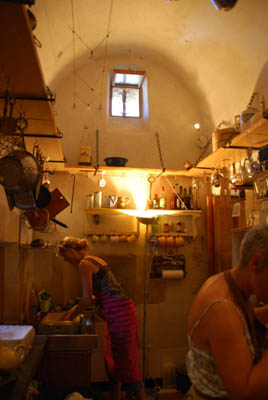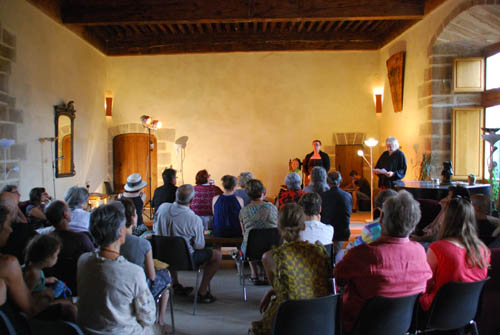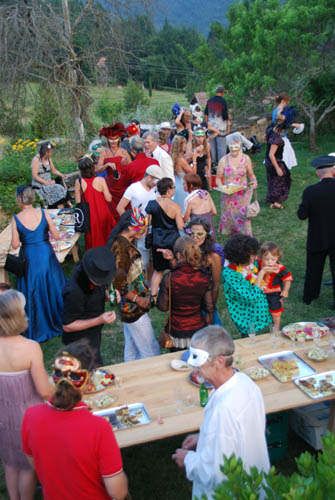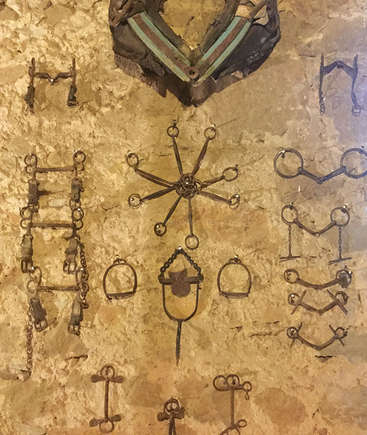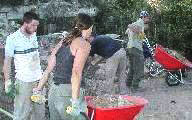Château St-Ferriol
Late Medieval Castle in the South of France
Volunteering at the Château de St-Ferriol
Information for Volunteers at the Chāteau de St-Ferriol

 Although
the château de St-Ferriol is not open to the general public,
we welcome volunteers to help with gardening, woodland, restauration,
archaology, historical research, and fund raising. From time
to time we have litters of standard poodles to look after (not
cosetted lap dogs, but large working dogs). Various types of
work are undertaken at the Chāteau de St-Ferriol. Although
the château de St-Ferriol is not open to the general public,
we welcome volunteers to help with gardening, woodland, restauration,
archaology, historical research, and fund raising. From time
to time we have litters of standard poodles to look after (not
cosetted lap dogs, but large working dogs). Various types of
work are undertaken at the Chāteau de St-Ferriol.
-
One strand of work centres on the restauration
of the fabric of the building, using natural materials such
as stone, lime, wood, iron and hemp.
-
A second strand centres on the creation
of period garden, including knot gardens, kitchen gardens,
herb gardens and medicinal gardens. We have a garden around
the house as well as approximately 10 hectares made up of
smallish parcels of land in the surrounding valleys where
we are slowly colonising with planting, cultivation and management.
We do not use chemicals. We are becoming self sufficient in
vegetables, fruit, nuts, herbs, fodder and wood, while concentrating
on the major building work required to restore the château.
- A third stand is Les Amies du Chateau de St-Ferriol,
a charitable foundation dedicated to restoring the chateau (of
which volunteers become honorary members).
We are currently looking for people with experience of
- stonemasonary
- dry stone walling
- working with lime
- woodworking

- blacksmithing
- leaded glass making
- heraldic and other artwork
- historical research (Old French, Latin & Occitan)
- excavations
- herbalism and organic gardening
- less specialised skills like labouring and gardening, helping
out with events and taking care of animals.
Volunteers usually work five hours a day for five days a week
and are well fed. The location is beautiful and we have comfortable
accommodation in the village, next to the Chateau.
Volunteers have plenty of opportunities for privacy so an independent
spirit is a help although in the day there is usually a lot
of activity going on with work on the château. With free
time people tend to enjoy walking the dogs or exploring the
hills or potter with books, photography, or painting. English
and French are spoken. If you have your own transport the possibilities
are endless.
The château is in the village of St-Ferriol and so there
are opportunities to hone one's French (or Occitan) with the
locals, who are a mine of agricultural know-how.
  If
you would like to help, please contact
us at least two weeks before you are hoping to arrive in
the region. As well as ensuring that we have accommodation available,
an idea of your interests, abilities and flexability helps us
to ensure that you have an enjoyable stay. If
you would like to help, please contact
us at least two weeks before you are hoping to arrive in
the region. As well as ensuring that we have accommodation available,
an idea of your interests, abilities and flexability helps us
to ensure that you have an enjoyable stay.
You'll also find us at www.workaway.info
Practicalities for volunteers
Accommodation
A gîte (a three bedroom nearby house) in St-Ferriol, is
now available. Some people with their own tents prefer to camp.
| Maison des Arcacias - The Volunteers' House |
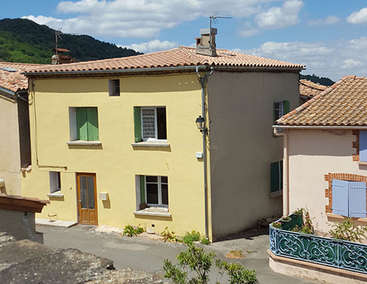 |
| |
| |
| Maison des Arcacias - A bedroom |
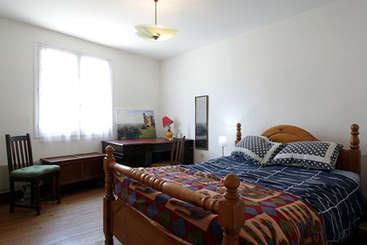 |
| |
| Maison des Arcacias - Kitchen |
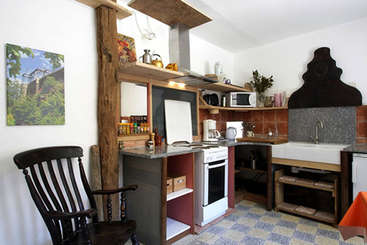 |
| |
| The Village of St-Ferriol |
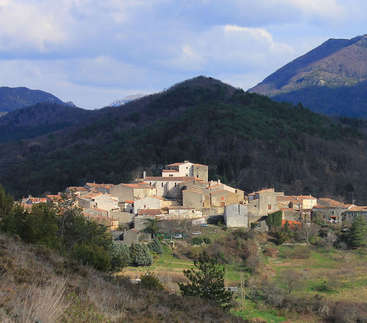 |
| |
| |
 |
| |
| Relaxing after work |
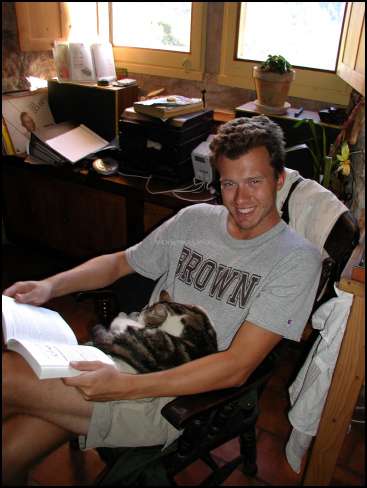 |
| |
| |
Transport
Volunteers with their own transport will find it much easier
to get about, as public tranport in such a rural area is limited.
We have bicycles available to volunteers.
Food
We have one meal a day together and groceries are supplied for
other meals. Food is generally organic. Vegitarians are welcomed,
but vegans might find their diet limited at the château
and, as a consequence of experience, people with eating disorders
are not encouraged.
Insurance
Volunteers must be prepared to have access to health care etc
in case of sickness or accidents. Health insurance or an E111
(British form) or equivalent are ideal
Age
For legal reasons, volunteers must be at least 18 years old,
but their is no upper limit.
Weather
In general the climate is Mediterranean, with hot dry summers,
rainy winters, and moderate springs and autumns. You can expect
to get 300 days of sunshine a year in the Languedoc, but the region
covers a large area, and for various reasons the weather can vary
considerably within its borders. After Corsica, the Languedoc
and Roussillon region is the hottest in France, with average annual
temperatures between 13.5°C and 15°C. A local city, Nīmes, reputed
to be the hottest place in France, recorded a shade temperature
of 43C (110F) in 2001. Summer temperatures are frequently in the
eighties (30C +).
The coastline, sheltered by mountains, tends to be sunnier than
and warmer than the inland areas. The mountains of course tend
to be cooler, and valleys damper. Generally, the inland temperatures
are a few degrees cooler in winter and a few degrees warmer in
summer. St-Ferriol, about 40 Km from the coast and at 400 m altitude
in the foothills of the Pyrenees tends to be few degrees cooler
that the plains of the bas Languedoc.
Rainfall is about 28 inches a year. Heavy rains come in autumn
and sometimes in spring. Summer rain is infrequent and the days
are long and dry.
The Languedoc has some of the most extreme weather in France.
It has not only the hottest summers, but also the highest winds.
It has spectacular lightning storms, hailstorms that can strip
a car of its paint, and occasional floods. Heavy snows are common
in the winter in the nearby mountans (which is good news for skiiers).
Examples of Work Completed
Doors.

 None
of the original doors has survived in working order, although
a few of them are salvageable. Also, there is enough evidence
to repair, or in most cases recreate, doors in the original style.
These are heavy wooden doors, held together by traditional iron
nails which provide attractive decoration. Heavy hand-forged iron
straps, also nailed on, are hinged on iron pins (gonds) set into
the stonework. Many medieval builders set the iron gonds directly
into the stonework, often with unfortunate results. None
of the original doors has survived in working order, although
a few of them are salvageable. Also, there is enough evidence
to repair, or in most cases recreate, doors in the original style.
These are heavy wooden doors, held together by traditional iron
nails which provide attractive decoration. Heavy hand-forged iron
straps, also nailed on, are hinged on iron pins (gonds) set into
the stonework. Many medieval builders set the iron gonds directly
into the stonework, often with unfortunate results. 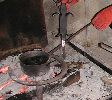
 When
the iron got wet and oxidised, it expanded - often cracking the
stonework. At least one of the workers on the original construction
new the old Roman trick of dipping ironwork in molten lead before
setting it into stone - a technique which avoids the problem.
We have therefore been using this technique for setting new gonds
into stone, and have hung more than a dozen new doors in this
way. When
the iron got wet and oxidised, it expanded - often cracking the
stonework. At least one of the workers on the original construction
new the old Roman trick of dipping ironwork in molten lead before
setting it into stone - a technique which avoids the problem.
We have therefore been using this technique for setting new gonds
into stone, and have hung more than a dozen new doors in this
way.
Excavations.
Various items were discovered in a cellar which had been sealed
and recently re-opened. Among them were chain mail; a number of
pots, some of them whole; glass; jewellery and an unidentified
tool.


 In front of the front door inside the courtyard we have discovered
a large pit, which does not appear to for drainage. We believe
that it was originally defensive, covered over by wooden boards
in times of safety, and quickly removed in time of trouble. It
is positioned directly under a bratice (for tipping unpleasant
things - boiling oil according to popular imagination - on unwelcomed
visitors. Discoveries elsewhere included coins dating from the
reign of Louis XVI - just before his execution.
In front of the front door inside the courtyard we have discovered
a large pit, which does not appear to for drainage. We believe
that it was originally defensive, covered over by wooden boards
in times of safety, and quickly removed in time of trouble. It
is positioned directly under a bratice (for tipping unpleasant
things - boiling oil according to popular imagination - on unwelcomed
visitors. Discoveries elsewhere included coins dating from the
reign of Louis XVI - just before his execution.
Fireplaces Rebuilt.

 All
of the monumental stone fireplaces had suffered from movement,
and the lintels were damaged. Using a range of techniques, and
replacing a few stones, stonemasons have repaired them. Three
of them are now in regular use in the winter months - burning
logs which generally need to people two move them. All
of the monumental stone fireplaces had suffered from movement,
and the lintels were damaged. Using a range of techniques, and
replacing a few stones, stonemasons have repaired them. Three
of them are now in regular use in the winter months - burning
logs which generally need to people two move them.
Stone carving
Gardens created.
The land around the house had not been cultivated for many years.
Along with teams of volunteers we have demolished a number of
recent stone buildings, terraced the main area to the East of
the chateau, and planted a number of gardens - mainly for fruit
trees, vegitables, and herbs. We are now almost self suffient
in fruit and vegitables, and grow about thirty different herbs.
Window restored to original form.
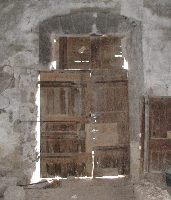
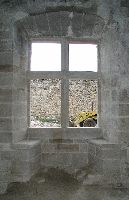
  A
ground-floor Renaissance stone mullioned window had been converted
into a doorway to allow farm vehicles to be housed in the Great
Hall. (see left) A
ground-floor Renaissance stone mullioned window had been converted
into a doorway to allow farm vehicles to be housed in the Great
Hall. (see left)
In 2003 two stone masons restored the window to its original
form (see right).
Preparing for an event at the Chateau
Rebuilding a wall
Rebilding the stonework for a Renaissance window
Leaded Glass window
Excavating a tower
Art
Stone Masonry
Creating a herb garden.
Events
The Chateau Museumn
Litter of Dogs

 We breed poodles - not the cosseted modern lap dogs that many
people associate with the word "poodle". These are large dogs,
the original breed, natural water retrievers. The last litter
consisted of twelve live births of which we kept two bitches.
Most of them have found homes in France, but others now live in
Spain and the USA.
We breed poodles - not the cosseted modern lap dogs that many
people associate with the word "poodle". These are large dogs,
the original breed, natural water retrievers. The last litter
consisted of twelve live births of which we kept two bitches.
Most of them have found homes in France, but others now live in
Spain and the USA. 

 Poodles are the most intelligent dogs. They grow quickly and are
naturally inquisitive. This means that they learn quickly and
need lots of exercise, which in turn calls for lots of long walks
in the countryside. As they are natural swimmers - they even have
webbed feet - they particularly enjoy summer walks down to the
nearby river.
Poodles are the most intelligent dogs. They grow quickly and are
naturally inquisitive. This means that they learn quickly and
need lots of exercise, which in turn calls for lots of long walks
in the countryside. As they are natural swimmers - they even have
webbed feet - they particularly enjoy summer walks down to the
nearby river.
Click on the following link to open a website on real
Standard Poodles in a new window:
Decorating the Great Hall
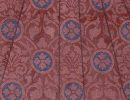
 The
walls will be lime washed and then painted in late medieval style.
Surviving paintwork in one room reveal that the original owners
were still decorating in a what would have been a very old fashioned
style in the fifteen hundreds. The technique, widespread in the
earlier part of the Middle Ages, was to paint large regular ashlars
onto the plain lime washed walls. Sometimes, as in the surviving
sample, they were left plain. Sometimes a simple design would
be repeated in the centre of each painted stone. (This fashion
was never abandoned in local churches, so you can find hundreds
of examples in the area, and our restauration will be based on
these). Contemporary fashion in the sixteenth century was to paint
was to paint walls with abstract repeating designs or murals,
often in bright primary colours. We hope to decorate other rooms
in this style. The
walls will be lime washed and then painted in late medieval style.
Surviving paintwork in one room reveal that the original owners
were still decorating in a what would have been a very old fashioned
style in the fifteen hundreds. The technique, widespread in the
earlier part of the Middle Ages, was to paint large regular ashlars
onto the plain lime washed walls. Sometimes, as in the surviving
sample, they were left plain. Sometimes a simple design would
be repeated in the centre of each painted stone. (This fashion
was never abandoned in local churches, so you can find hundreds
of examples in the area, and our restauration will be based on
these). Contemporary fashion in the sixteenth century was to paint
was to paint walls with abstract repeating designs or murals,
often in bright primary colours. We hope to decorate other rooms
in this style.
|

![]() Although
the château de St-Ferriol is not open to the general public,
we welcome volunteers to help with gardening, woodland, restauration,
archaology, historical research, and fund raising. From time
to time we have litters of standard poodles to look after (not
cosetted lap dogs, but large working dogs). Various types of
work are undertaken at the Chāteau de St-Ferriol.
Although
the château de St-Ferriol is not open to the general public,
we welcome volunteers to help with gardening, woodland, restauration,
archaology, historical research, and fund raising. From time
to time we have litters of standard poodles to look after (not
cosetted lap dogs, but large working dogs). Various types of
work are undertaken at the Chāteau de St-Ferriol.








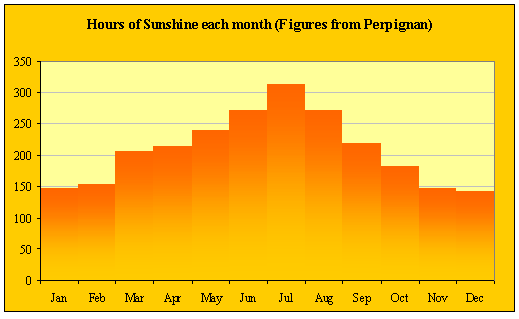




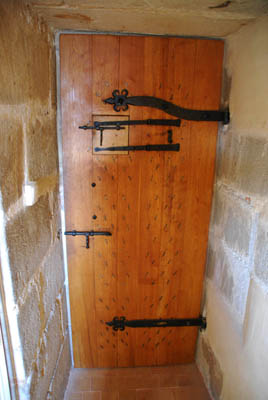
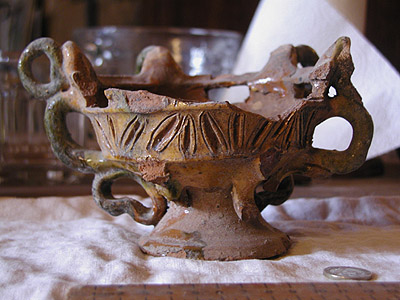
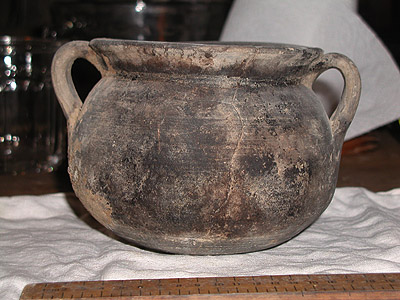
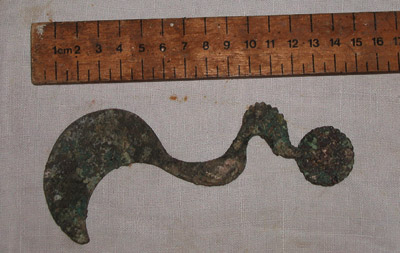


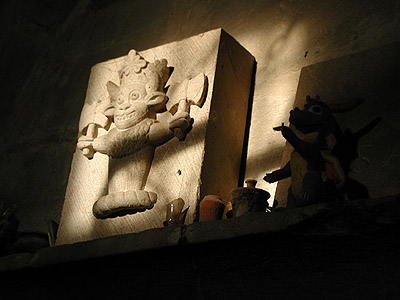
.jpg)
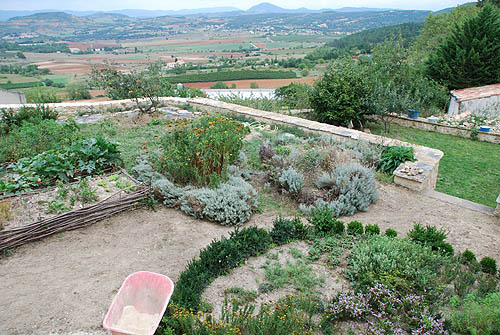


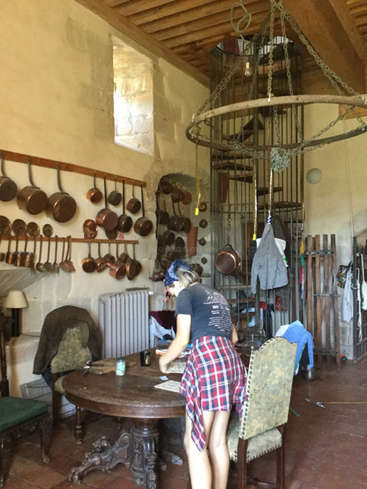
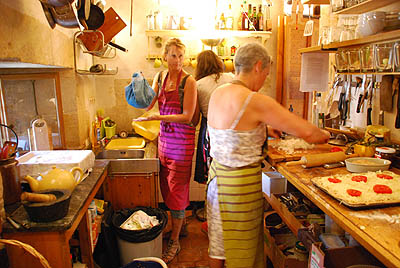

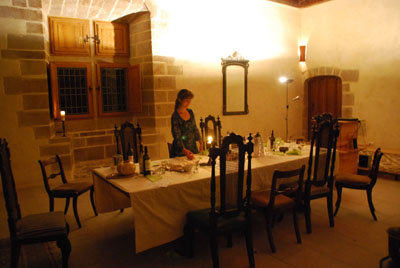

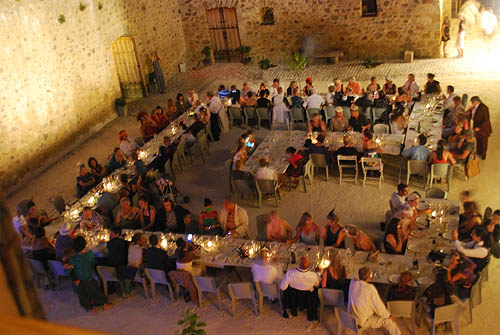
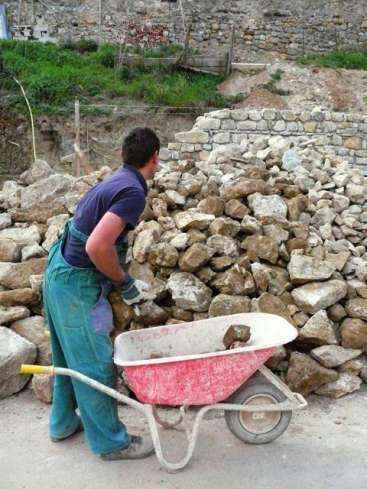
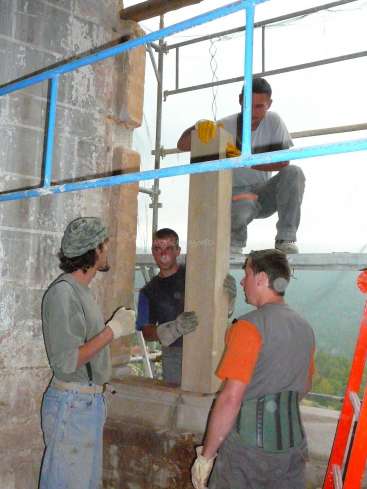
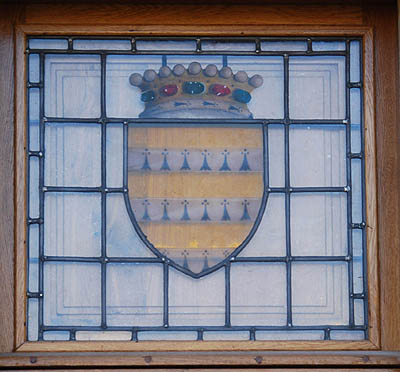
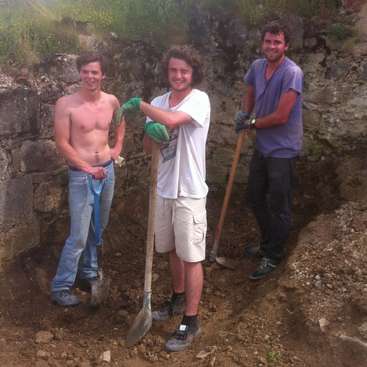
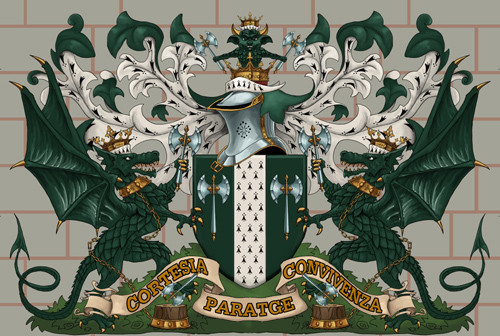
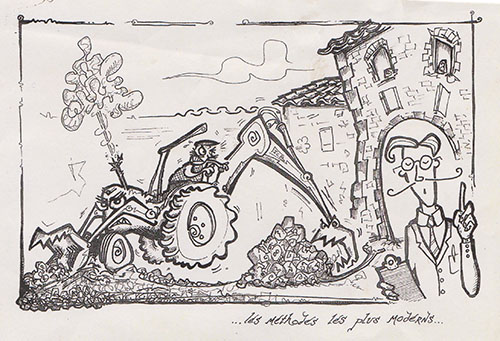
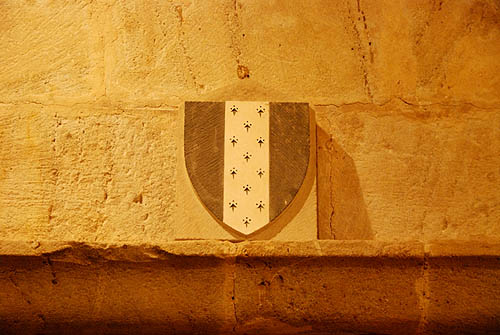

.jpg)
